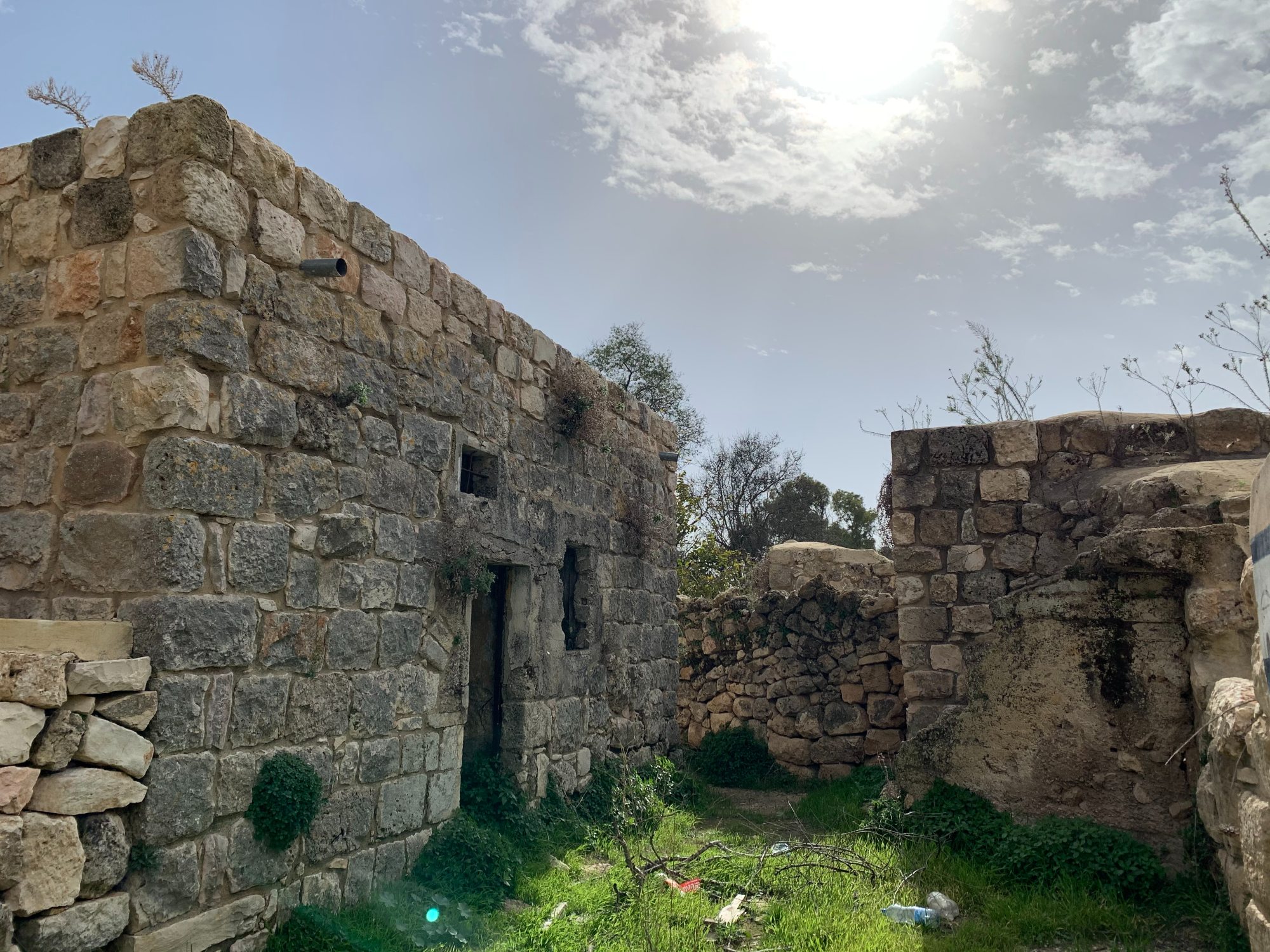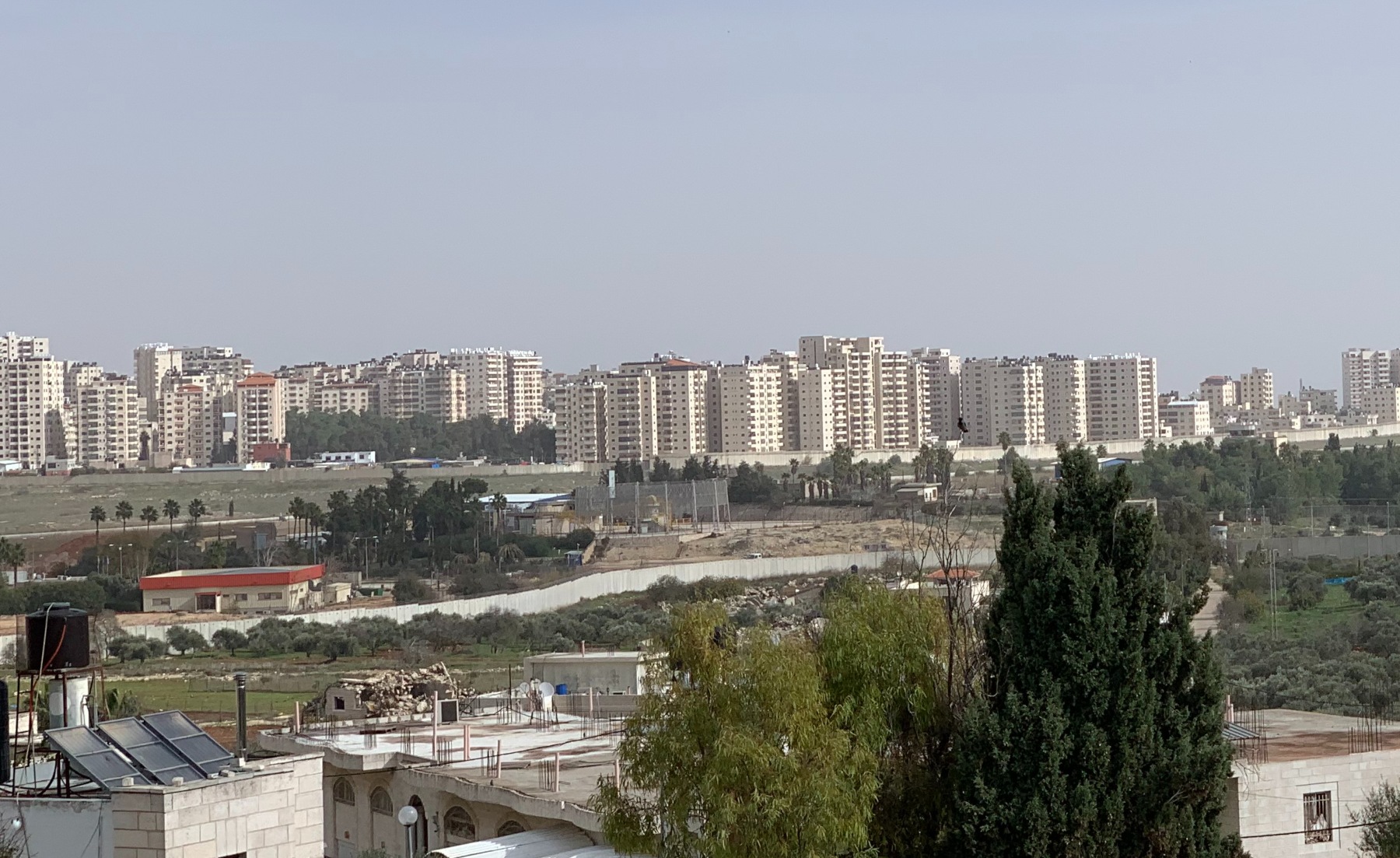Construction near Palestinian village of Qalandiya has residents reminiscing about when they could still access Jerusalem International Airport

By Shatha Hammad in Qalandiya, occupied Jerusalem
Published date: 19 December 2020 10:24 UTC
Headers on official papers issued by the Qalandiya local council still bear the icon of an aeroplane, a reminder of the Palestinian dream of one day having their own airport.
But Israel is inching closer to building an illegal settlement on the site of what was once known as the Jerusalem International Airport, burying with it Palestinian hopes of claiming it as their own.
Israeli media reported last week that Israeli authorities had approved a plan for the settlement of Atarot with 9,000 housing units, which they described as a move deliberately taking place ahead of the inauguration in January of US President-elect Joe Biden, who has expressed his opposition to settlement construction, which violates international law.
Located on land that is part of the Palestinian village of Qalandiya, north of occupied East Jerusalem, the airport, the only one in the occupied West Bank and Jerusalem area, has been etched into collective memory since it was established in 1924 under the British Mandate.
Residents of Qalandiya recall wistfully a time when it was a mainstay of their lives, as they brace for the area to become further out of reach.
Memories from the tarmac
Jerusalem International Airport, covering 4,000 dunams (400 hectares) and known locally as Qalandiya Airport, was built by British Mandate authorities, who used it as a military airport before transferring its administration to the Jordanian government in 1951, two years after the establishment of the state of Israel, during which Jordan operated it as a commercial airport.
‘It was an indescribable feeling, to get on the plane and see my house and my village below’
– Youssef Awadallah, 84-year-old resident of Qalandiya
In the 1950s and 1960s, the airport contributed to bringing tourism to the West Bank, and witnessed the arrival of delegations from across the Arab world for touristic, cultural and commercial purposes.
While only a few of Qalandiya’s residents had the financial means at the time to take flights from the airport, it remains a part of the memories they cherish.
Youssef Awadallah, an 84-year-old resident of Qalandiya, told MEE that he was one of the few villagers who travelled in 1963 from the airport, heading to Beirut to continue his studies.
“As a student at the time, I got a reduction in the ticket price, and I travelled for the first time on the plane from Palestine to Lebanon. It was an indescribable feeling, to get on the plane and see my house and my village below,” Awadallah said.
“We spent our childhood at the airport, receiving and bidding farewell to travellers. We established relationships with airport employees, and they allowed us to be present there, as the children of the village.
“I remember when [Jordanian] King Hussein came and the military parade that was held for him at the airport… these memories have never left my mind.”
Abdelhalim Hamza, 67, told MEE he also spent much of his childhood running with friends on the tarmac. His favourite memories were his trips to buy juice from a small shop that had opened inside the airport.
“When we didn’t have money, we would exchange the items for eggs or milk,” he said.

Hamza also recalled the Israeli army’s occupation of the airport in 1967, when dozens of Israeli jeeps were dispatched to the area.
“I remember the Jordanian army’s withdrawal. The soldiers were very afraid, and they abandoned a new jeep with a machine gun at the entrance to the village. They told us ‘the Israeli army is coming’.
Raafat Awadallah, 63, said his father used to do construction work at the airport in 1920. “My father owned a cart pulled by two horses, which he used to transport stones during the runway construction process,” he told MEE.
One of his most cherished memories, Raafat said, was when he and the other residents of Qalandiya heard through the radio that the late, well-known Egyptian actor and musician Farid al-Atrash, was coming to the West Bank. They all flocked to the airport to receive him.
“We would listen to the radio to know if political or artistic figures were coming to the airport. It was a great pleasure for us,” he said.
Shrinking village
After Israel occupied the West Bank in the wake of the 1967 Middle East War, the army took control and changed its name to Atarot airport, using it for domestic flights before shutting it down in 2000 at the start of the Second Intifada.
The airport, which consists of a runway, control tower, and reception hall for arrivals and departures, still stands; the Israeli army operates an aviation factory on the premises.
The area has now been turned into a military outpost with access or taking photographs forbidden.

In February, the Israeli government announced that the Atarot settlement would be built on 120 hectares in the area of the former airport. It will include large commercial centres, a hotel, work spaces and other facilities. The settlement is set to fall between Qalandiya and the Palestinian villages of Kafr Aqab and al-Ram.
If constructed, it will be the first new settlement in East Jerusalem since 1997.
Khalil Tufakji, director of mapping at the Arab Studies Association, told Middle East Eye he believes certain indicators show that implementation of the settlement plan is close.
Tufakji pointed out that the Israeli army announced two weeks ago a new building plan for a road and tunnel adjacent to the Qalandiya military checkpoint and the Atarot settlement industrial area, in order to link them to other illegal settlements around Jerusalem.
He explained that before construction tenders are put out, authorities are expected to publish the plan and map for the settlement for any objections within a month.
Raafat Awadallah, who heads the Qalandiya village council, told MEE that since 1967 the village’s land has shrunk from 4,000 to 800 dunams (400 to 80 hectares) in order for Israel to build settlements and military infrastructure in the area, as well as the illegal separation wall, which slices through the village.
“The wall divided the village of Qalandiya into eastern and western parts. It now takes an hour, at times more, to reach the other half. Before that it only took a few minutes,” said Raafat.
In 2016, he said, Qalandiya witnessed an extremely difficult day when the Israeli army demolished 12 residential buildings.
In 2018, the Israeli army delivered demolition notices to 21 more buildings in the village.
The last demolition order was issued this month, targeting a section of Raafat’s own home, which has been standing since 1961. The Israeli court also imposed a fine of 60,000 shekels ($18,500).
He expects that matters will only get worse with the implementation of the new settlement plan on the lands of the airport.
“By establishing this project, one of the most important Palestinian dreams will be lost. And we will lose our memories of the airport, where we experienced our childhood,” he said.
Israel plans to expand settlement cutting off Jerusalem from West Bank towns













No comments:
Post a Comment